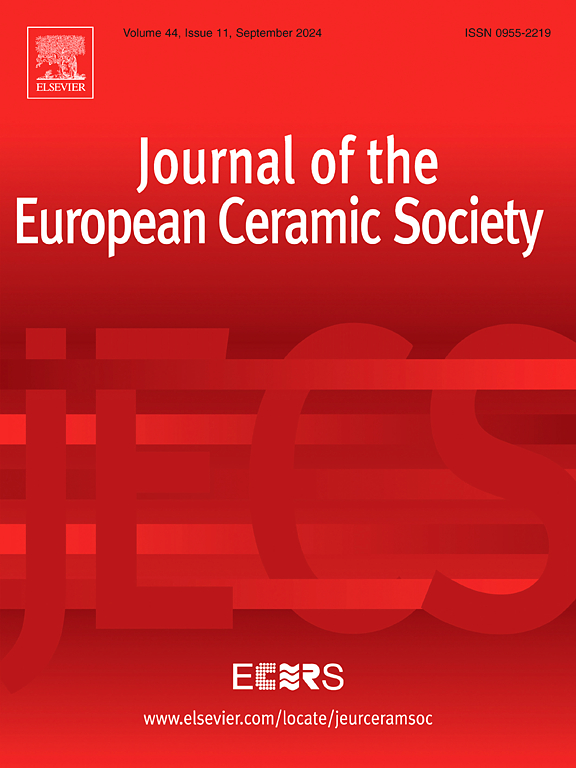Pressure-controlled synergy between dehydrogenation and densification in TiH2 sintering
IF 5.8
2区 材料科学
Q1 MATERIALS SCIENCE, CERAMICS
Journal of The European Ceramic Society
Pub Date : 2025-05-20
DOI:10.1016/j.jeurceramsoc.2025.117551
引用次数: 0
Abstract
Titanium hydride (TiH2) ceramics have become key high-performance hydrogen storage materials. However, the sintering of TiH2 faces significant challenges due to the low temperature of dehydrogenation reaction (300–800 °C). In this study, high-pressure spark plasma sintering (HPSPS) technique was employed to successfully realize low-temperature high-density preparation by suppressing dehydrogenation and regulating densification kinetics under a high pressure (200 MPa). Under the optimized conditions (750 °C, 200 MPa, and 10 min), a fully dense single face-centered cubic (FCC) δ-Ti(H) phase bulk material was fabricated. The initial dehydrogenation temperature of samples fabricated by high-pressure spark plasma sintering (HPSPS) was higher than the dehydrogenation temperature of powder. Mechanistic analyses showed that high pressure inhibited hydrogen escape by compressing pores while promoting particle plastic flow and interfacial bonding. Increasing holding time from 5 to 10 min enhanced diffusion-dominated densification but exacerbated dehydrogenation-induced porosity under low-pressure conditions. The study shows that high pressure compaction can alleviate the contradiction between traditional high temperature densification and low temperature decomposition of TiH2, and offers a new strategy for the efficient densification of materials for low temperature decomposition.
TiH2烧结中脱氢和致密化的压力控制协同作用
氢化钛(TiH2)陶瓷已成为关键的高性能储氢材料。然而,由于脱氢反应温度较低(300-800℃),TiH2的烧结面临着很大的挑战。本研究采用高压火花等离子烧结(HPSPS)技术,在高压(200 MPa)下抑制脱氢和调节致密化动力学,成功实现了低温高密度制备。在优化条件(750℃,200 MPa, 10 min)下,制备了全致密的单面心立方(FCC) δ-Ti(H)相块状材料。高压火花等离子烧结(HPSPS)制备的样品的初始脱氢温度高于粉末的脱氢温度。机理分析表明,高压通过压缩孔隙抑制氢逸出,同时促进颗粒塑性流动和界面结合。将保温时间从5到10 min增加,可以增强扩散主导的致密化,但在低压条件下会加剧脱氢诱导的孔隙度。研究表明,高压压实可以缓解传统高温致密化与TiH2低温分解之间的矛盾,为低温分解材料的高效致密化提供了新的策略。
本文章由计算机程序翻译,如有差异,请以英文原文为准。
求助全文
约1分钟内获得全文
求助全文
来源期刊

Journal of The European Ceramic Society
工程技术-材料科学:硅酸盐
CiteScore
10.70
自引率
12.30%
发文量
863
审稿时长
35 days
期刊介绍:
The Journal of the European Ceramic Society publishes the results of original research and reviews relating to ceramic materials. Papers of either an experimental or theoretical character will be welcomed on a fully international basis. The emphasis is on novel generic science concerning the relationships between processing, microstructure and properties of polycrystalline ceramics consolidated at high temperature. Papers may relate to any of the conventional categories of ceramic: structural, functional, traditional or composite. The central objective is to sustain a high standard of research quality by means of appropriate reviewing procedures.
 求助内容:
求助内容: 应助结果提醒方式:
应助结果提醒方式:


